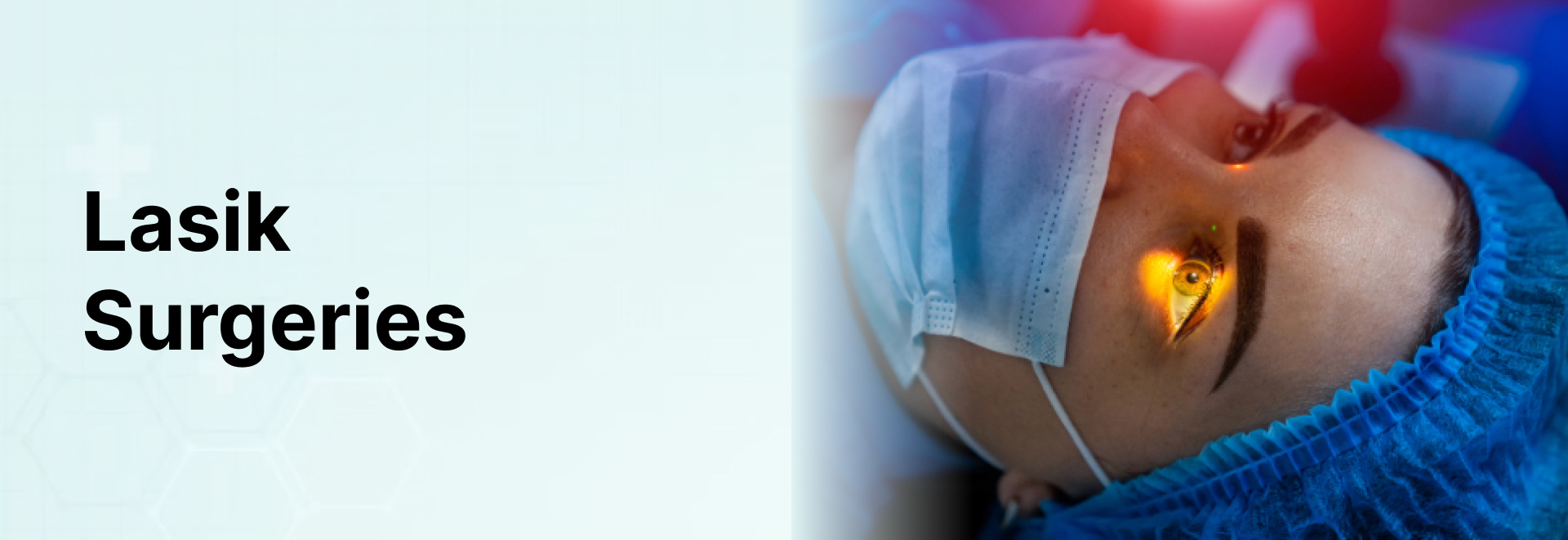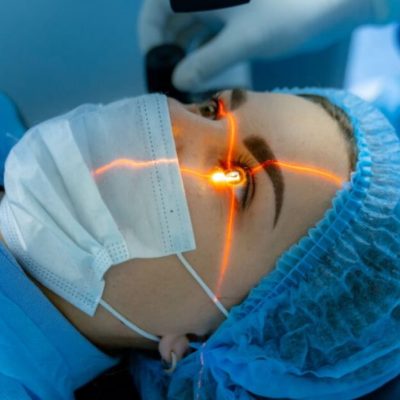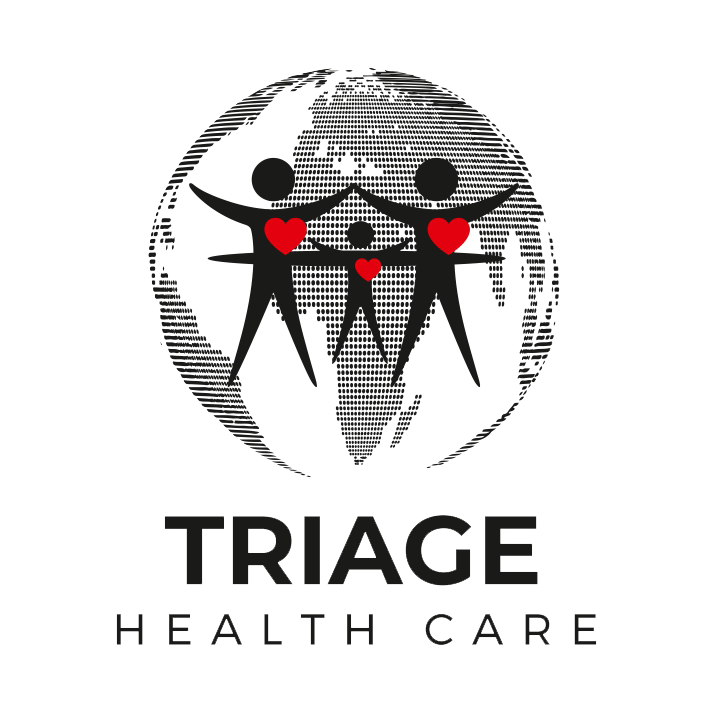
Lasik Eye Surgery
The most popular and well-known laser refractive procedure to treat visual issues is LASIK eye surgery. LASIK, also known as laser-assisted in situ keratomileusis, is an option to spectacles or contact lenses.
A specialised cutting laser is used during LASIK surgery to exactly alter the shape of the cornea, the dome-shaped clear tissue at the front of your eye, to enhance vision.
In eyes with regular vision, the cornea precisely bends (refracts) light onto the retina at the back of the eye. However, near-sightedness (myopia), farsightedness (hyperopia), or astigmatism cause the light to be bent wrongly, leading to blurred vision.
Although vision correction with glasses or contact lenses is possible, reshaping the eye will also produce the required refraction.
Symptoms
- Difficulty in viewing objects
- Red eyes
- Night blindness
- Headaches
- Sensitivity to light
- Dry eyes
- Excessive tearing
- Blurred vision

Causes
Far-sightedness
Farsightedness, or hyperopia, is a disease that affects many people. This refers to the eyes' inability to concentrate on objects that are close by, such as those that are within reading distance, while objects farther away can be seen clearly. This condition can make it difficult to comprehend, give you headaches, and make doing precise work difficult.
Near-sightedness
Nearsightedness is another name for the condition known as myopia. The issue here is that while the eyes can focus on close things, they struggle to do so for distant objects. This may appear as a challenge recognizing distant faces, a challenge reading captions and signs that are far away, and a challenge while travelling.
Astigmatism
With astigmatism, the cornea of the eyes has an irregular shape, causing eyesight to become blurry.
© Triage Healthcare All rights reserved — Made by Rittz Digital


